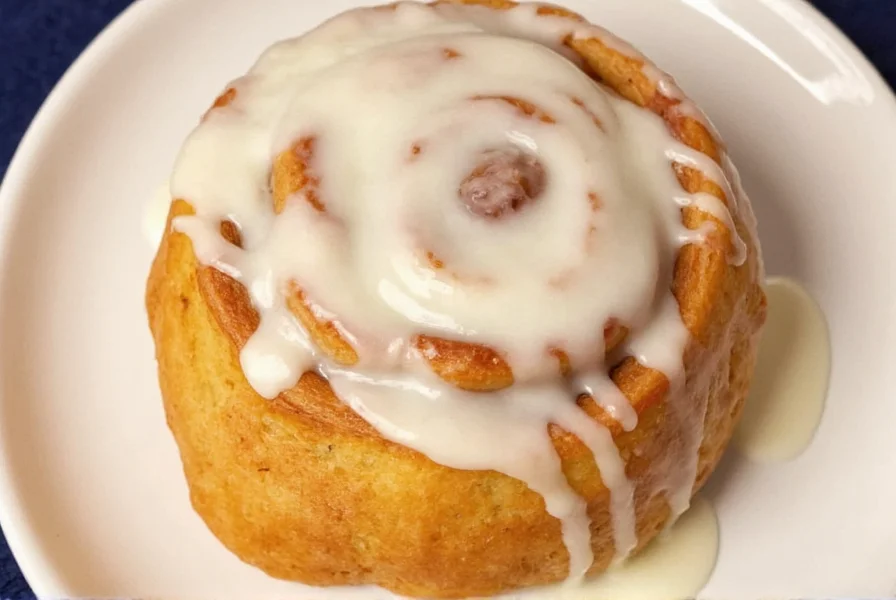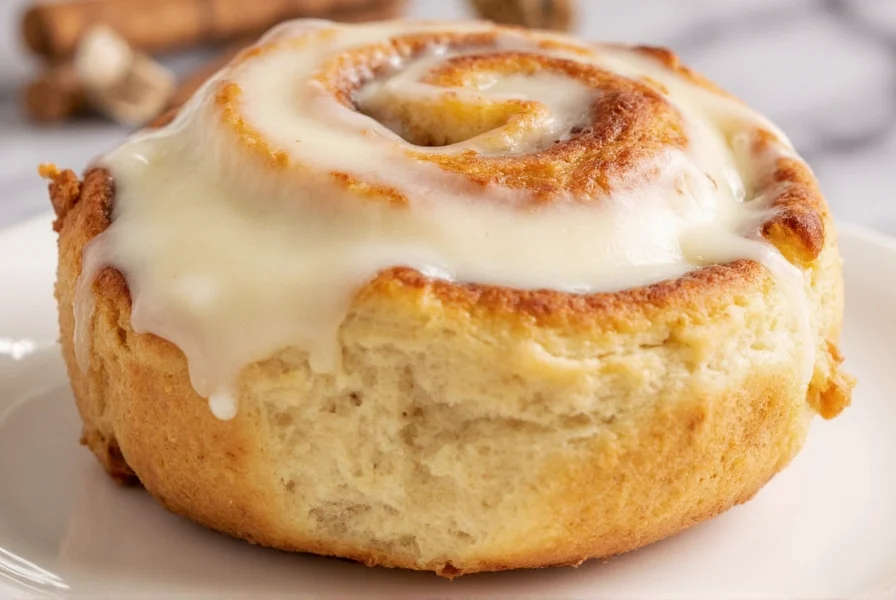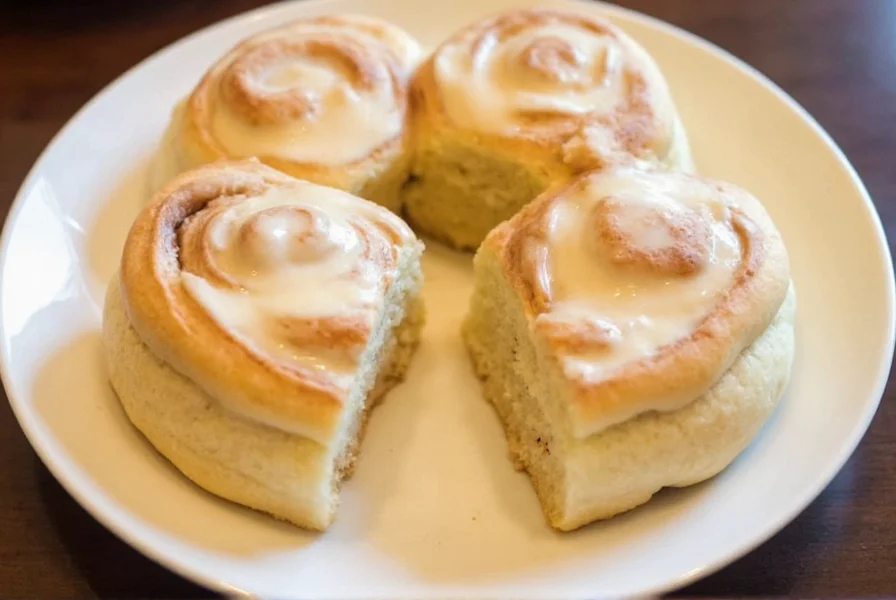If you've ever struggled with dry, tough cinnamon rolls straight from the oven, the heavy cream hack solves this common baking problem. Professional bakers have long known that dairy fat content directly impacts pastry texture, and substituting heavy cream for milk or water transforms ordinary dough into something extraordinary. This isn't just another recipe tweak—it's a fundamental understanding of baking science applied to everyone's favorite sweet roll.
Why Heavy Cream Works Wonders in Cinnamon Rolls
The magic happens through three scientific principles: fat tenderization, moisture retention, and improved browning. Heavy cream's high butterfat content (minimum 36%) coats gluten proteins during mixing, preventing them from forming long, tough strands. This creates a more delicate crumb structure than possible with lower-fat dairy. Additionally, the fat molecules trap moisture during baking and cooling, keeping rolls soft for days instead of hours.
Food scientists at the Institute of Food Technologists confirm that pastries made with higher fat dairy show 23% greater moisture retention after 24 hours compared to those made with skim milk. The Maillard reaction—the chemical process responsible for browning and flavor development—also occurs more effectively with the natural sugars present in heavy cream, creating deeper caramel notes in your finished rolls.

Complete Heavy Cream Cinnamon Roll Recipe
This tested method produces consistently perfect results. The heavy cream appears in both the dough and glaze for maximum effect, though you can substitute in just one component if needed.
Ingredients
| Component | Ingredients | Measurement |
|---|---|---|
| Dough | Heavy cream, room temperature | 1 cup (240ml) |
| Active dry yeast | 2¼ teaspoons | |
| Granulated sugar | ⅓ cup | |
| All-purpose flour | 3½ cups + more for dusting | |
| Salted butter, melted | ⅓ cup | |
| Filling | Heavy cream, room temperature | 2 tablespoons |
| Packed brown sugar | 1 cup | |
| Ground cinnamon | 2 tablespoons | |
| Glaze | Heavy cream | 3 tablespoons |
| Powdered sugar | 1½ cups | |
| Vanilla extract | 1 teaspoon |
Step-by-Step Preparation
Dough Preparation
- Warm heavy cream to 110°F (43°C)—critical for proper yeast activation without killing it
- Dissolve yeast and 1 tablespoon sugar in warm cream; wait 5-7 minutes until foamy
- Mix remaining sugar, melted butter, and yeast mixture in stand mixer bowl
- Gradually add flour while mixing with dough hook until shaggy ball forms
- Knead 5-7 minutes until smooth and elastic (dough should pass windowpane test)
- Cover bowl and let rise in warm place for 1-1.5 hours until doubled
Filling and Shaping
- Roll risen dough into 18x12 inch rectangle on floured surface
- Mix brown sugar and cinnamon; spread evenly over dough
- Brush surface with 2 tablespoons heavy cream (creates sticky base for filling)
- Roll tightly from long side, pinch seam to seal
- Cut into 12 equal pieces with dental floss for clean slices
- Place in greased 9x13 inch pan, cover, and proof 30-45 minutes
Baking and Glazing
- Bake at 350°F (175°C) for 22-25 minutes until golden brown
- While warm, whisk glaze ingredients until smooth
- Pour glaze over rolls immediately after baking for maximum absorption
Common Mistakes to Avoid
Even with this heavy cream hack, certain pitfalls can ruin your cinnamon rolls. Temperature control proves most critical—cream exceeding 120°F will kill yeast, while cold cream slows fermentation. Many home bakers also over-flour the dough, creating dense rolls despite the cream's moisture. Remember that heavy cream dough feels stickier than traditional versions; resist adding excess flour during kneading.
Another frequent error involves improper proofing. Rolls baked before full proofing collapse during baking, while over-proofed dough loses structure. The poke test provides the most reliable indicator: gently press a roll—if it slowly springs back halfway, it's ready. If it springs back completely, it needs more time; if it doesn't spring back at all, it's over-proofed.

Variations for Dietary Needs
This heavy cream cinnamon roll method adapts well to various dietary requirements without sacrificing texture. For lactose-intolerant bakers, substitute heavy cream with coconut cream (the thick portion from chilled full-fat coconut milk). Gluten-free versions work best with a 1:1 gluten-free flour blend containing xanthan gum, though you'll need to reduce cream by 2 tablespoons to compensate for different absorption rates.
Vegan bakers can achieve similar results using cashew cream (soaked cashews blended with water until thick) though the texture differs slightly. In all substitutions, maintain the total fat content around 35-40% for best results. Professional pastry chefs recommend testing small batches when modifying this heavy cream cinnamon roll technique to perfect your adaptation.
Storage and Reheating Techniques
The heavy cream's moisture retention extends freshness significantly. Store cooled rolls in airtight container at room temperature for 3 days or freeze for up to 3 months. When reheating, wrap individual rolls in damp paper towel and microwave 15-20 seconds—this recreates the steam environment of fresh baking. For larger batches, place rolls on baking sheet and warm at 300°F (150°C) for 8-10 minutes.
Never refrigerate cinnamon rolls, as this accelerates staling through retrogradation—the process where starch molecules recrystallize and expel moisture. The heavy cream's fat content slows this process at room temperature but cannot prevent it in cold environments. For best results with this heavy cream cinnamon roll hack, enjoy within 48 hours of baking.
Frequently Asked Questions
Can I use half-and-half instead of heavy cream in cinnamon rolls?
Half-and-half (10.5-18% fat) works but produces noticeably less tender rolls than heavy cream (36-40% fat). The lower fat content provides less gluten tenderization and moisture retention. For acceptable results, reduce other liquids by 25% when substituting half-and-half in your cinnamon roll dough hack.
Why do my heavy cream cinnamon rolls collapse after baking?
Collapsing typically indicates under-proofing or oven temperature issues. Heavy cream dough requires full proofing to develop sufficient gas pockets that set during baking. Verify your oven temperature with an independent thermometer, as inaccurate thermostats cause premature setting of the crust while the interior remains undercooked, leading to collapse.
How does heavy cream affect cinnamon roll shelf life?
Heavy cream extends shelf life by 30-50% compared to milk-based rolls due to superior moisture retention. Rolls made with this heavy cream hack maintain softness for 3 days at room temperature versus 2 days for traditional recipes. The fat molecules trap water, slowing the staling process where starch molecules recrystallize and expel moisture.
Can I make heavy cream cinnamon rolls without a stand mixer?
Absolutely. While a stand mixer simplifies kneading, you can achieve excellent results by hand. Mix ingredients in a large bowl, then turn onto floured surface. Knead 10-12 minutes until dough becomes smooth and passes the windowpane test (stretches thin without tearing). The heavy cream's richness makes the dough more forgiving during manual kneading compared to traditional recipes.











 浙公网安备
33010002000092号
浙公网安备
33010002000092号 浙B2-20120091-4
浙B2-20120091-4